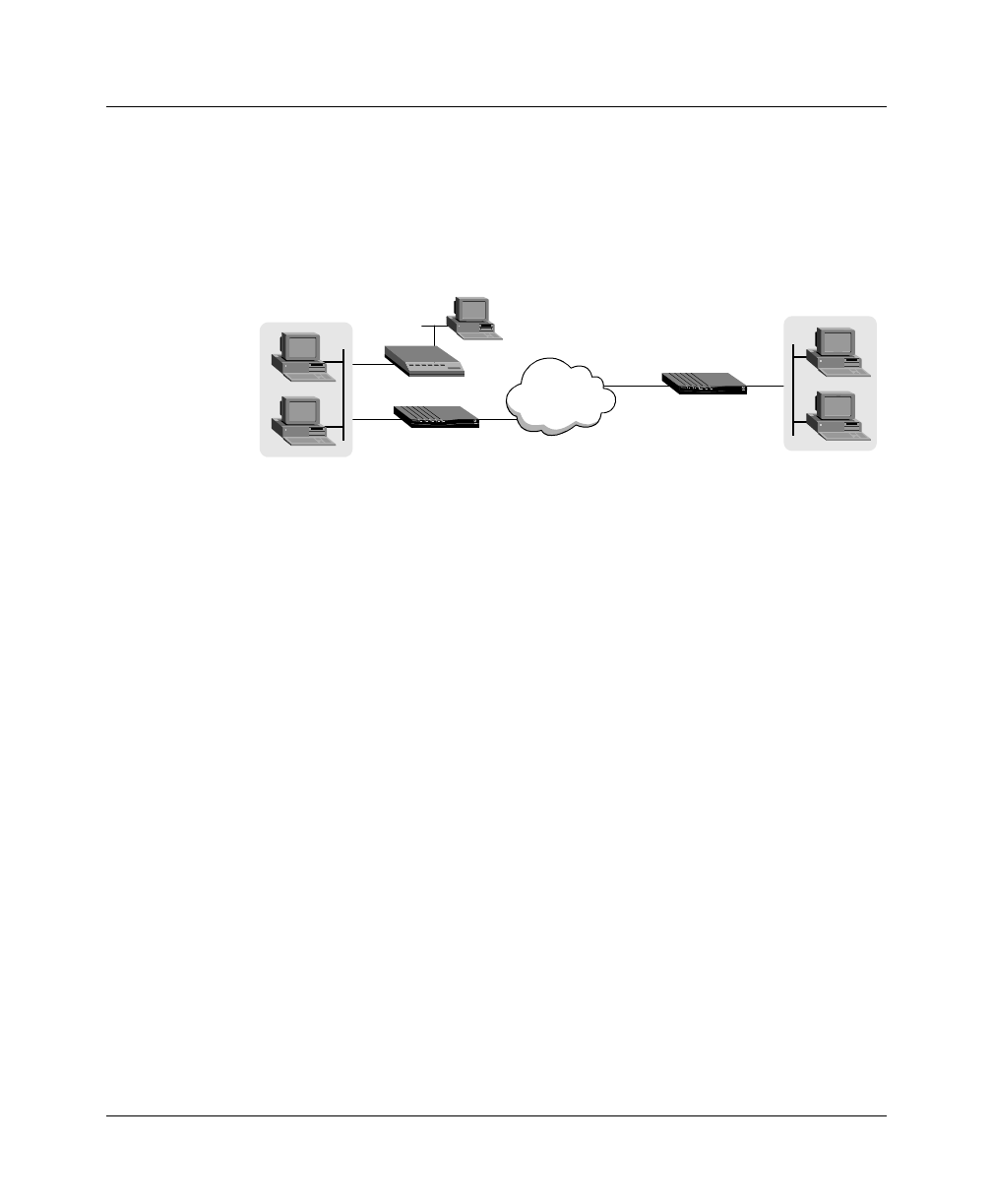User`s guide
Table Of Contents
- Ascend Customer Service
- How to use this guide
- What you should know
- Documentation conventions
- How to use the on-board software
- Manual set
- Configuring WAN Connections
- Configuring IP Routing
- Introduction to IP routing on the Pipeline
- Managing the routing table
- Parameters that affect the routing table
- Static and dynamic routes
- Configuring static routes
- Specifying default routes on a per-user basis
- Enabling the Pipeline to use dynamic routing
- Route preferences
- Viewing the routing table
- Fields in the routing table
- Removing down routes to a host
- Identifying Temporary routes in the routing table
- Configuring IP routing connections
- Ascend Tunnel Management Protocol (ATMP)
- IP Address Management
- Connecting to a local IP network
- BOOTP Relay
- DHCP services
- Dial-in user DNS server assignments
- Local DNS host address table
- Network Address Translation (NAT) for a LAN
- Configuring IPX Routing
- How the Pipeline performs IPX routing
- Adding the Pipeline to the local IPX network
- Working with the RIP and SAP tables
- Configuring IPX routing connections
- Configuring the Pipeline as a Bridge
- Defining Filters and Firewalls
- Setting Up Pipeline Security
- Pipeline System Administration
- Pipeline 75 Voice Features
- IDSL Implementations
- APP Server utility
- About the APP Server utility
- APP Server installation and setup
- Configuring the Pipeline to use the APP server
- Using App Server with Axent SecureNet
- Creating banner text for the password prompt
- Installing and using the UNIX APP Server
- Installing and using the APP Server utility for DO...
- Installing and using the APP Server utility for Wi...
- Installing APP Server on a Macintosh
- Troubleshooting
- Upgrading system software
- What you need to upgrade system software
- Displaying the software load name
- The upgrade procedure
- Untitled

Configuring IP Routing
Configuring IP routing connections
Pipeline User’s Guide Preliminary January 30, 1998 2-35
Example router connection on a subnet
In the following example network, the Pipeline is used to connect telecommuters
with their own Ethernet networks to the corporate backbone. The Pipeline is on a
subnet, and assigns subnet addresses to the telecommuters’ networks.
Figure 2-8. A connection between local and remote subnets
This example assumes that the Ethernet > Answer profile and Ethernet > Mod
Config > Ether options in both devices have been set up properly to enable IP
routing.
Because the Pipeline specifies a netmask as part of its own IP address, it must use
other routers to reach any IP addresses outside that subnet. To forward packets to
other parts of the corporate network, the Pipeline must either have a default route
configuration to a router in its own subnet, or must enable RIP on Ethernet.
To configure the Pipeline at site A with an IP routing connection to site B:
1
Open the Ethernet > Connection > profile for site B.
2
Set these parameters:
Station=PipelineB
Active=Yes
Encaps=MPP
Route IP=Yes
Encaps options...
Send Auth=CHAP
Recv PW=*SECURE*
Send PW=*SECURE*
WAN
10.7.8.200/24
10.7.8.204
10.7.8.232
Site B
Site A
Cisco
10.4.5.1/24
10.4.4.133/24
Pipeline










